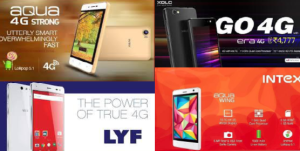 Smartphone adoption in India is increasing at a fast pace driven largely by device affordability and increasing relevance of devices in day-to-day lives. At the same time, mass adoption of 4G in the rest of the Asia Pacific region has led to steep fall in price of LTE components and consequently LTE devices. The two factors combined with the Indian telcos’ accelerated 4G launches, are driving radical changes in the Indian smartphone market.
Smartphone adoption in India is increasing at a fast pace driven largely by device affordability and increasing relevance of devices in day-to-day lives. At the same time, mass adoption of 4G in the rest of the Asia Pacific region has led to steep fall in price of LTE components and consequently LTE devices. The two factors combined with the Indian telcos’ accelerated 4G launches, are driving radical changes in the Indian smartphone market.
Around 42% of all mobile phones shipped into India in CY2015 were smartphones as compared to 10.8% in CY2011; during the same period (CY2011-15), total smartphone shipments grew at a CAGR of more than 50% (source: Gartner). 4G devices are also increasingly gaining traction with sales to end-users growing about 5X in CY2015 as compared to CY2014 to about 27.4 mn devices (or 10% of overall sell-throughs). A key driver for this growth has been the steep decline in 4G device costs. The predominant LTE bands supported by these devices are FD-LTE 1800 (band 3) and TD-LTE 2300 (band 7), a few of them also support FD-LTE 850 (band 5).
It is now possible for an Indian consumer to purchase a 4G-enabled smartphone for as low as Rs 3,999—price of Phicomm Clue 630 on Snapdeal (after a 20% discount on MRP of Rs 4,999). 4G device prices have come down sharply in the past six months, in September 2015, the most economical 4G smartphone cost about Rs 7,000 (US$105); today we believe there are about 15 smartphones that are available for less than Rs 5,000 (US$75).
Though the underlying trends of affordability and end-user sales are promising, this might not directly lead to higher actual usage for 3G/4G services. Case in point Idea had 55.5 mn 3G/4G smartphones users at the end of December 2015 but had only 21.2 mn 3G/4G users, a mere 38% of total. This is one metric we believe should improve going forward, driven by an expanding content ecosystem, increasing consumer awareness, improving use-cases and further decline in device prices.